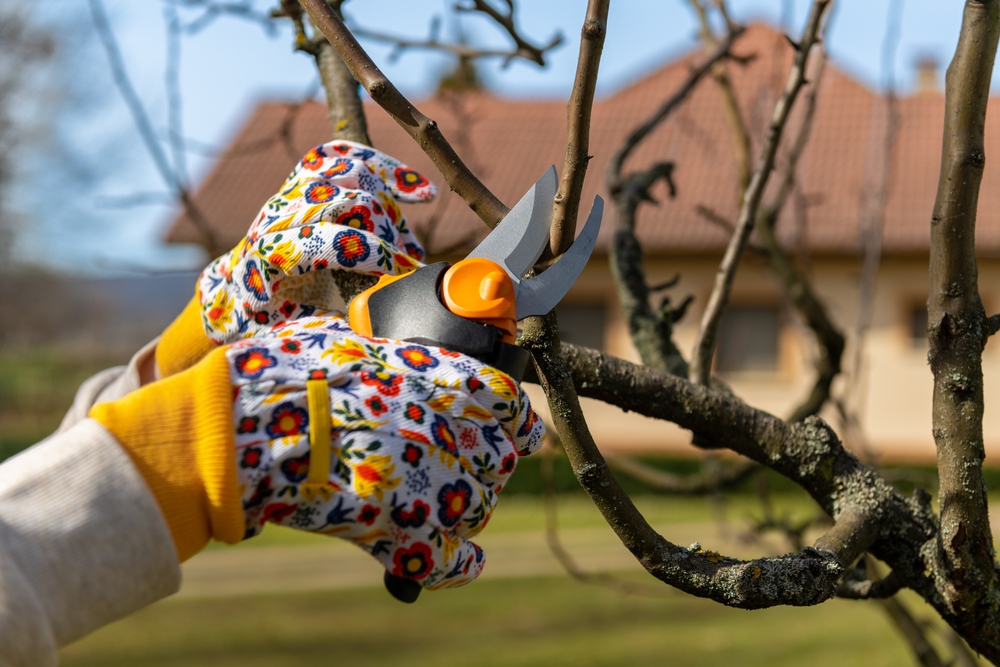Pruning young trees may seem counterproductive, but it’s essential to healthy growth. Let’s look at why pruning is so important, how you can do it properly, and how pruning can prevent your young trees from being susceptible to storm damage. Our arborists at American Arbor Care are experts at properly pruning trees and ensuring that they grow healthy and strong.
The Benefits of Pruning Young Trees
Pruning a young tree helps it to be upright and strong over the course of its (hopefully very) long life. By pruning away unneeded branches, you can create a strong base and structure that focuses new growth in all the right places. By pruning your young tree, its canopy isn’t just more aesthetically pleasing, it’s also more balanced, which ensures a stronger trunk and root structure beneath.
Diseased and damaged branches can affect the health of the entire tree. By pruning them away, you’re creating a healthier tree that can focus on new, healthy growth, without being weighed down by branches that are sick.
How to Prune Young Trees
Pruning young trees takes knowledge and skill, and it’s important to follow procedures to ensure that it stays healthy and strong.
- Timing: The best time for pruning young trees is when they’re dormant. This is typically between late fall and winter. Dormancy means the tree is not actively growing, and it won’t be as affected by a few cuts here and there.
- Tools: Use a sharp pair of pruning shears or a saw to prune your young tree.
- Technique: Carefully cut branches at a 45-degree angle, just above a bud. Don’t make flush cuts or leave stubs. This can lead to open wounds that make a tree more susceptible to infestation and disease.
If you’re unsure about pruning your trees, contact your local arborist for advice, or to schedule a free inspection.
Specific Pruning Cuts For Young Trees
There are certain cuts that should be made when pruning young trees.
- Central Leader: This is what arborists call the trunk of your tree. Sometimes you have to pick a central leader early on and remove competing branches so it grows healthy, straight, and strong.
- Scaffold Branches: These are the main branches that support the canopy of the entire tree. Make sure they’re evenly spaced around the trunk to support the canopy, and pick branches that are angled upward.
- Lateral Branches: These smaller branches grow off of the scaffold branches. Trim and prune these branches to give your tree a balanced canopy and overall pleasing look. Damaged and diseased lateral branches should always be removed.
How to Prevent Storm Damage
All trees are susceptible to storm damage, but there are steps you can take to help your trees weather storms more effectively.
- Remove damaged and diseased branches. These branches are already weak and are most likely to break in a storm.
- Thin out the canopy. If it’s too dense, no more than a third the canopy can trap wind, which can lead to broken branches and extensive damage. A thinned canopy allows wind to pass through as a storm blows in.
- Raise the canopy to prevent wind damage. Prune away lower branches to allow wind to pass below and through the branches with ease.
Trust American Arbor Care With Your Denver Trees
Pruning young trees is a great way to provide preventative care. By shaping and pruning your tree, you can encourage it to grow healthy, balanced, and strong. This ensures that your trees are better equipped to weather any storm that blows in. If you have questions about pruning young trees, or you’d like to get a free estimate from a local arborist, contact American Arbor Care today. We’d be happy to ensure that your trees are pruned effectively.

